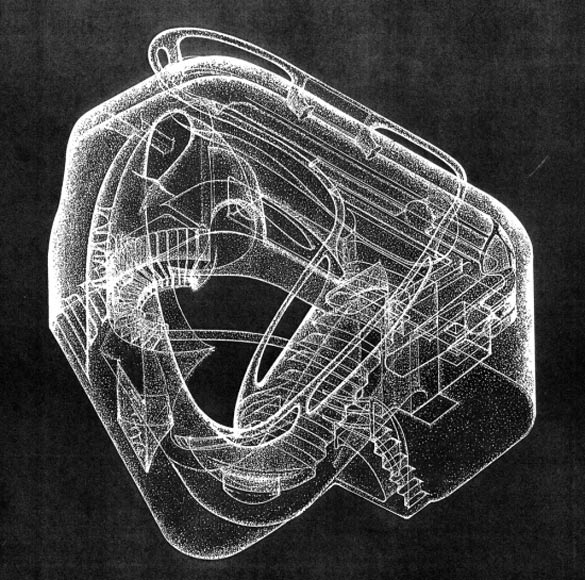I recently learned with sadness that Kathryn Findlay has passed away from a brain tumour at the age of 60. She leaves an important architectural legacy for a number of reasons.
Firstly, the works that Ushida Findlay built in Japan during the early-to-mid ’90s were truly groundbreaking. Since the Modernist era of the 1950’s and 60s, relatively few significant curvilinear buildings had been realised anywhere in the world. The Truss Wall House (1993), stands out as a seminal work of Japanese residential architecture. It’s also emblematic of a strain of eccentric and extreme houses built in the country’s recessionary post-bubble era.

Her works presaged a formal approach that gained mainstream adoration with Gehry’s Bilbao Guggenheim and is now epitomised by the proliferative works of Zaha Hadid, who graduated from the AA only a couple of years prior to Kathryn. Ushida Findlay’s control over form, with all building elements – walls, floors, ceilings, even handrails – merged into a sculptural totality, before modern 3D animation and CAD software trivialised form-making. Designing these works by hand – not to mention (what I guess) are hand-drawn/stippled renderings – must have a been a massively labor intensive undertaking.
I don’t find anything self-consciously avant-garde about Ushida Findlay’s houses. They seem irreverent and playful, capturing a uniquely Japanese spirit of fantasy – a spirit akin to legendary anime director Hayao Miyazaki. Speaking to the Guardian last year, she spoke of the “disapproval (the firm received) in Japan for not being minimalists.” But they persevered in the hope that eventually, “they’ll understand you, and you’ll understand them.”
Kathryn Findlay did eventually convince Japan to take notice and was one of very few outsiders to crack into its somewhat closed and (still, to this day) patriarchal culture. But Kathryn was the first female academic appointed to the faculty of Tokyo University’s School of Architecture. She will be remembered in Japan along with names like Josiah Condor and Antonin Raymond, as an exemplary foreign architect who left a lasting impression here.
It is a shame that I never had the honor to meet Kathryn Findlay in-person. But as a fellow AA-graduate, who has chosen to start a career in Japan, and shares an interest in the complexities of building challenging architecture, she is certainly a role model.

One response to “On the Passing of Kathryn Findlay (1953-2014)”
Great article, the Truss Wall House (1993), stands out as a seminal work of Japanese residential architecture.